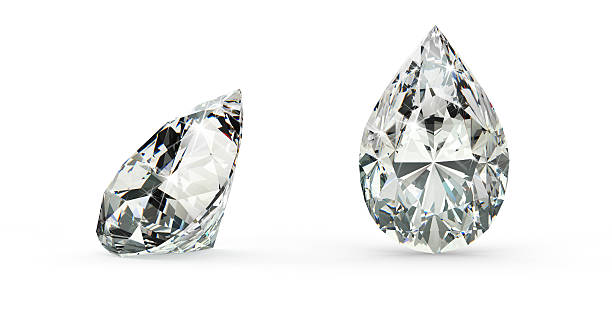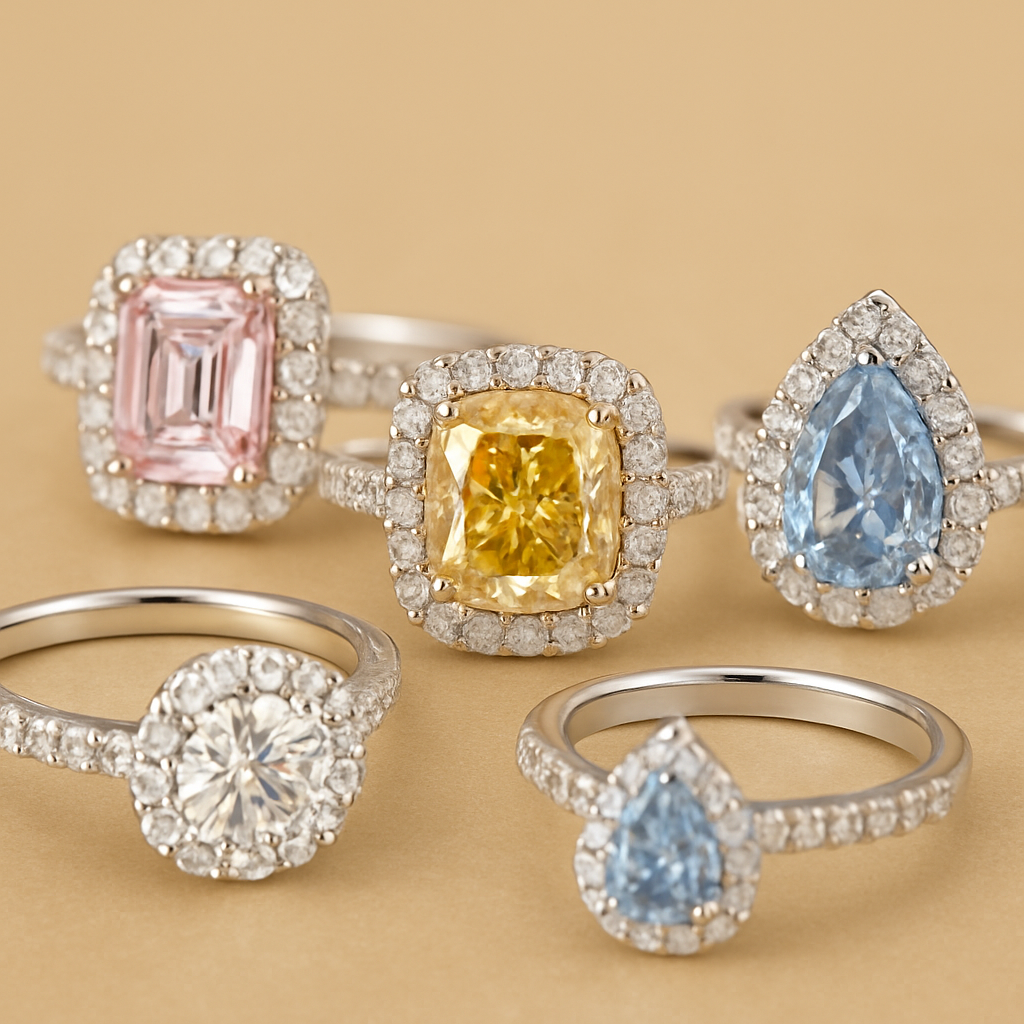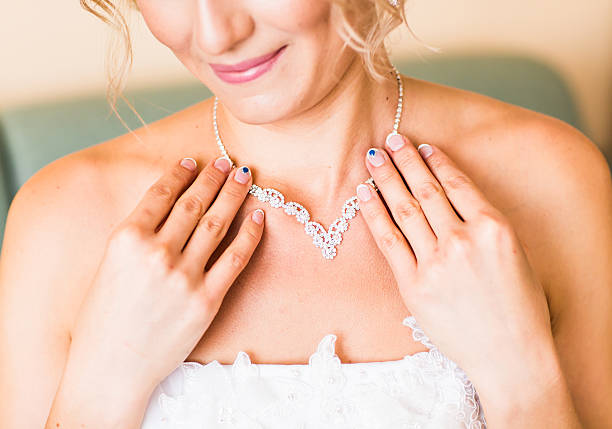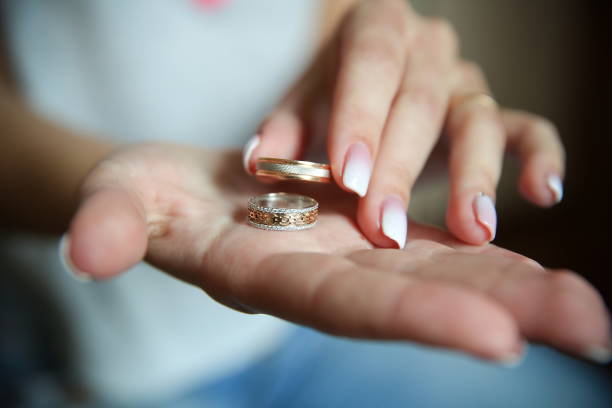When we're talking about diamonds that marry classic beauty with one-of-a-kind charm, the pear diamond is an absolutely gorgeous option. Its elegant teardrop form not only draws the eye but also conveys a message of chic sophistication and uniqueness. If you're thinking about using a pear diamond for an engagement ring, a pendant, or earrings, knowing its characteristics will allow you to make a smart choice that lasts a lifetime.
What Is a Pear Diamond? — A Unique Blend of Classic and Contemporary

A pear diamond, also referred to as a teardrop diamond, is a combination cut that unites the brilliance of the round cut with the sophisticated taper of the marquise. It has one rounded tip and one pointed tip and is shaped somewhat like a water droplet. It's an adaptable cut that can be worn with the point either up or down, each presentation making for a unique style statement.
Compared to more widespread shapes such as rounds or princess cuts, the pear diamond presents an immediately familiar silhouette that's both timeless and trendy. It's appropriate for a variety of jewelry styles, ranging from vintage-inspired solitaires to contemporary halo settings.
The Fascinating History of the Pear Cut Diamond
The pear diamond has roots that go back centuries, to the 15th century. Flemish diamond cutter Lodewyk van Berquem created it, opening up diamond cutting to new heights through symmetrical faceting techniques that released brilliance and fire. His breakthroughs made the pear cut one of the first fancy cuts to reflect light dramatically.
Over the years, pear diamonds have graced royalty and stars, starred in legendary pieces that embody romance and elegance. From Queen Elizabeth's legendary pear-shaped diamond earrings to red carpet appearances, this cut continues to be the favorite of those looking for elegance with character.
Understanding Pear Diamond Shape and Proportions
The beauty of a pear diamond is its shape and proportions — but variations have dramatic effects.
Length-to-Width Ratio
Length-to-width ratio means the length of the diamond as a proportion of its width. This ratio has an immense influence on the overall look of the diamond:
- Classic Ratio (1.45 to 1.60): Balanced appearance with a satisfying teardrop profile.
- Elongated Ratio (1.60 to 1.75): Produces a slim, sophisticated look that stretches fingers.
- Plumper Ratio (1.40 to 1.45): Provides a fuller, more rounded look, often favored for pendants or earrings.
The ideal ratio is based on personal taste and how the diamond will be worn.
Symmetry and Balance
Ideal symmetry is critical. The tip of the pear must be precisely at the center of the rounded end for visual harmony. Flaws such as unbalanced curves or off-center tips can reduce the diamond's beauty and fire.
The Sparkle Factor: How Pear Diamonds Catch the Light
Pear diamonds are cut to achieve the greatest brilliance. With 58 facets placed to maximize light refraction, a perfectly cut pear diamond glows with fiery sparks and brilliant scintillation.
Two factors determine the quality of sparkle, though:
- Cut Precision: High-quality cut grades guarantee that light reflects around inside and gets back to your eye to produce the desired sparkle.
- Bow-Tie Effect: This is a dark shadow in the form of a bow-tie that can occur in the center due to leakage of light. A light bow-tie adds character, but a heavy bow-tie reduces brilliance. Always see diamonds in person or through good videos.
How to Choose the Perfect Pear Diamond: A Shopper’s Guide

Selecting the perfect pear diamond requires weighing the 4 Cs (Cut, Color, Clarity, Carat) with shape-related factors.
1. Cut
Cut is most important. Opt for diamonds with very good or excellent cut grades, having good symmetry and polish. A high-quality cut reduces bow-tie effects and increases light return.
2. Color
Pear diamonds will be brighter in color, especially at the rounded end. Choose D to H for an almost colorless appearance. Think about your setting color as well; yellow gold settings can cover up for minor color tints, while white gold or platinum settings need higher color ratings for a light look.
3. Clarity
Due to the shape, inclusions closer to the point may be more obvious and susceptible. Search for diamonds with VS2 or better clarity for optimal eye-clean appearance and durability.
4. Carat Weight
Pear diamonds will tend to look larger than round diamonds of equal carat weight because of their length. Think about how the diamond will appear on your finger or neck instead of just weight.
5. Certification
Always ask for certification from reputable laboratories such as GIA or IGI to guarantee authenticity and proper grading.
Tap here to get more information...
Popular Setting Styles for Pear Diamonds
Care must be taken to guard the fragile pointed tip of a pear diamond when displaying its beauty.
Solitaire Setting
The traditional choice, solitaires accentuate the shape of the diamond with little distraction. Make certain the pointed end is guarded by a V-prong or bezel.
Halo Setting
Circling the pear with a circle of smaller diamonds gives added sparkle and guards the edges. This type of setting increases size and glamour.
Bezel Setting
Metal completely surrounds the diamond, providing maximum protection. Best for active occupations or those who want a contemporary style.
Side-Stone and Three-Stone Settings
Safeguarding the pear diamond with smaller gemstones or diamonds on either side can create depth and sophistication, calling attention to the distinctive shape.
Caring for Your Pear Diamond Jewelry
Due to their sharp tips, pear diamonds need special care:
- Clean your diamond frequently with warm water and mild soap and brush gently into corners with a soft brush.
- Take off your jewelry when engaging in activities that pose the risk of impact or exposure to strong chemicals.
- Store pieces of pear diamonds separately in soft-lined cases to prevent scratching.
- Visit your jeweler yearly for check-ups to make sure prongs and settings are tight.
Why Pear Diamonds Are a Wonderful Choice
Pear diamonds are perfect for those who want a combination of sparkle, elegance, and uniqueness. They flatter the wearer by elongating fingers and offering a softer, more feminine shape than traditional cuts.
Their versatility also makes them suitable for engagement rings, pendants, earrings, and even bracelets. Choosing a pear diamond means selecting a stone with personality and timeless appeal.
Pear Diamond Fun Facts and Tips
- Pear diamonds are occasionally referred to as "Love Stones" due to their teardrop shape, representing tears of happiness.
- Pointing the point down on a ring can give the finger a slimming effect.
- When buying, look at the diamond from several angles to inspect for symmetry and bow-tie effect.
- Custom settings may be considered to enhance your pear diamond's individual personality.
Final Thoughts: The Timeless Elegance of Pear Diamonds
The pear diamond is a breathtaking choice that combines history, craftsmanship, and beauty. Whether you seek a statement engagement ring or a special gift, understanding the nuances of pear diamonds ensures you find the perfect match.
At San Liora, our expert jewelers are ready to guide you through the selection process, helping you find a pear diamond that reflects your style and story with brilliance and grace.
Explore our exclusive pear diamond collection today and discover the charm of this extraordinary cut.







